For more than four decades, Mr Mun Chor Weng has kept a clock thought to have decorated one of Asia’s finest hotels at the turn of the 20th century.
At the crack of dawn every Sunday, the 83-year-old collector religiously winds the timepiece that once belonged to the Europe Hotel, a palatial edifice that had overlooked the Padang.
“The moment I wake up, between 6.30am and 7am, I wind the clock,” he said.
The habit – once common in an era before clocks were powered by batteries – dates back to Mr Mun’s years as a teenager helping out in his father’s clock shop, where he would wind dozens of mechanical clocks on Sunday to show that they were in working condition.
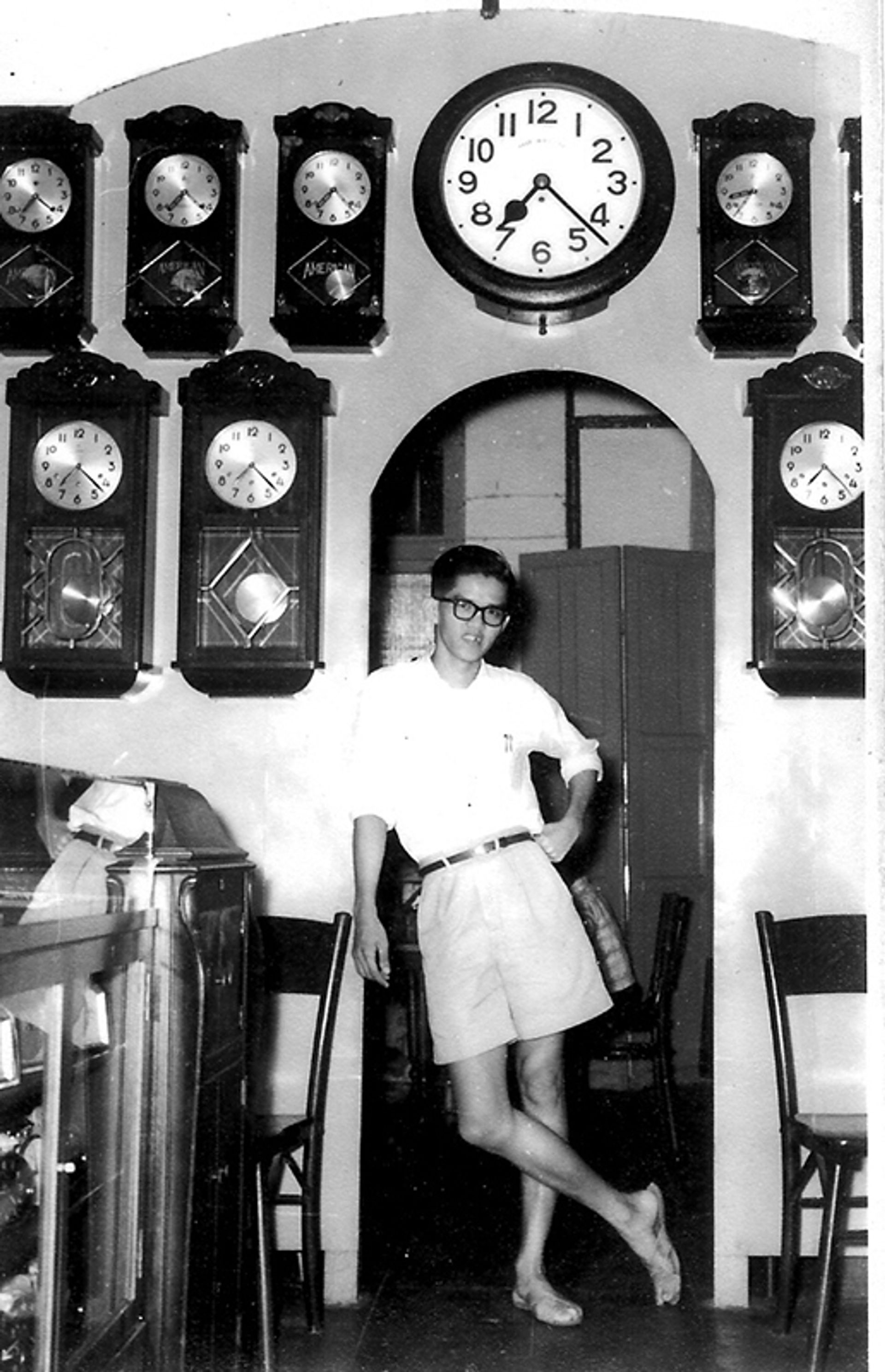
Unlike their battery-powered counterparts, mechanical clocks have to be wound consistently, as they run on energy stored in their springs.
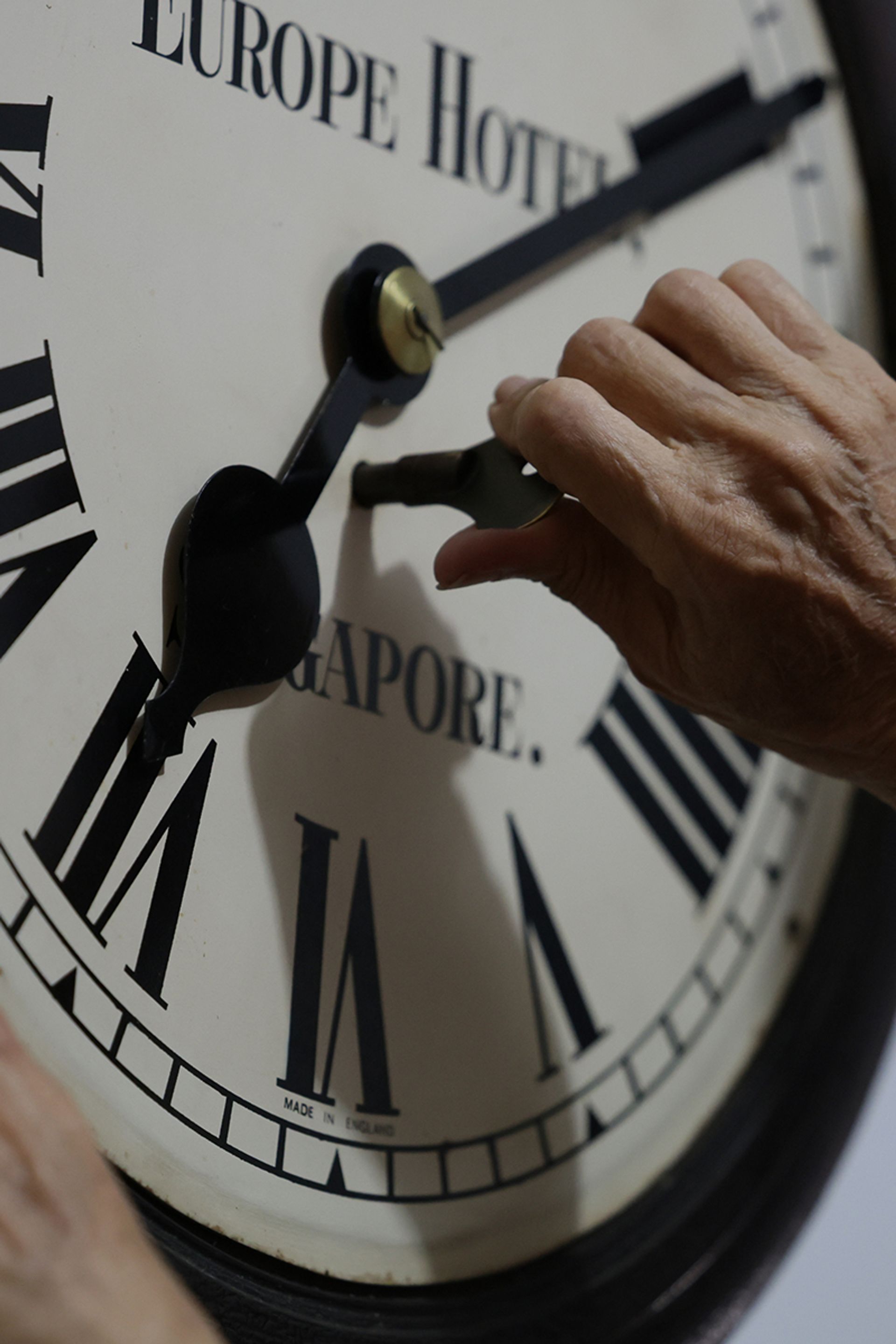
The timepiece, crafted by British clockmaker H. Williamson in 1910, hangs next to Mr Mun’s bed. It is one of his most prized possessions in his 200-strong collection of mechanical clocks.
The retired teacher said: “Because of its size, the clock is likely to have been displayed in the hallways of the hotel, which was once as famous as Raffles Hotel and was even featured in a short story by acclaimed writer Somerset Maugham.”
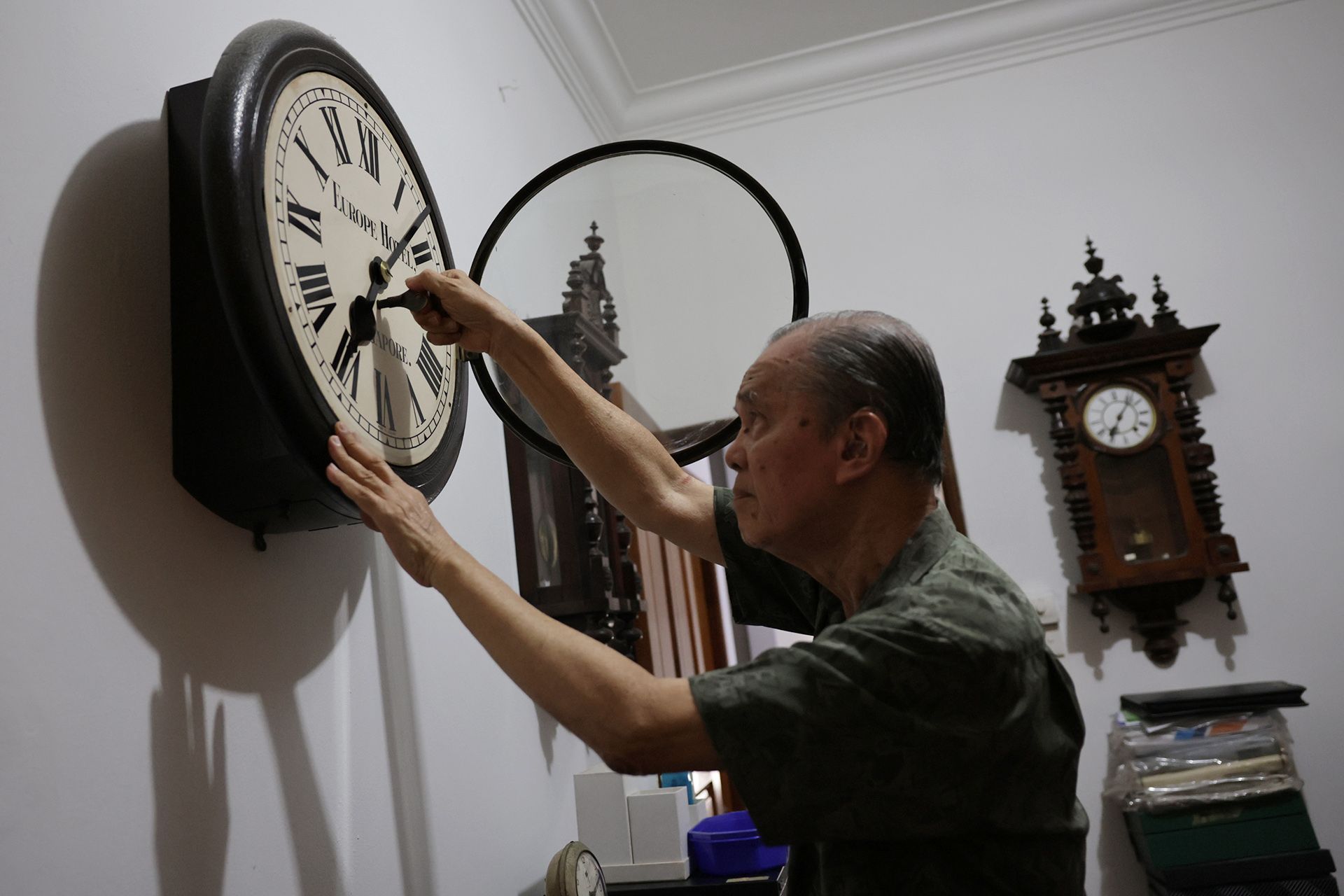
The hotel ran into financial troubles in the late 1920s. Its assets were sold off, and it was demolished in 1934. The site is now occupied by the former Supreme Court building.
His late father, Mr Mun Sah, had a friend who bought the clock. It was later acquired by the older Mr Mun, a clock dealer, who liked the timepiece so much that he traded one of his clocks to get his hands on it, his son recalled.
Mr Mun Sah, who died at the age of 92 in 1992, came to Singapore when he was 12 years old. Like thousands of Chinese immigrants in the 19th and 20th centuries, he came in search of a better life.
By the late 1940s, he had earned enough money through odd jobs and as a clock dealer’s apprentice to start his own shop near Newton Circus.
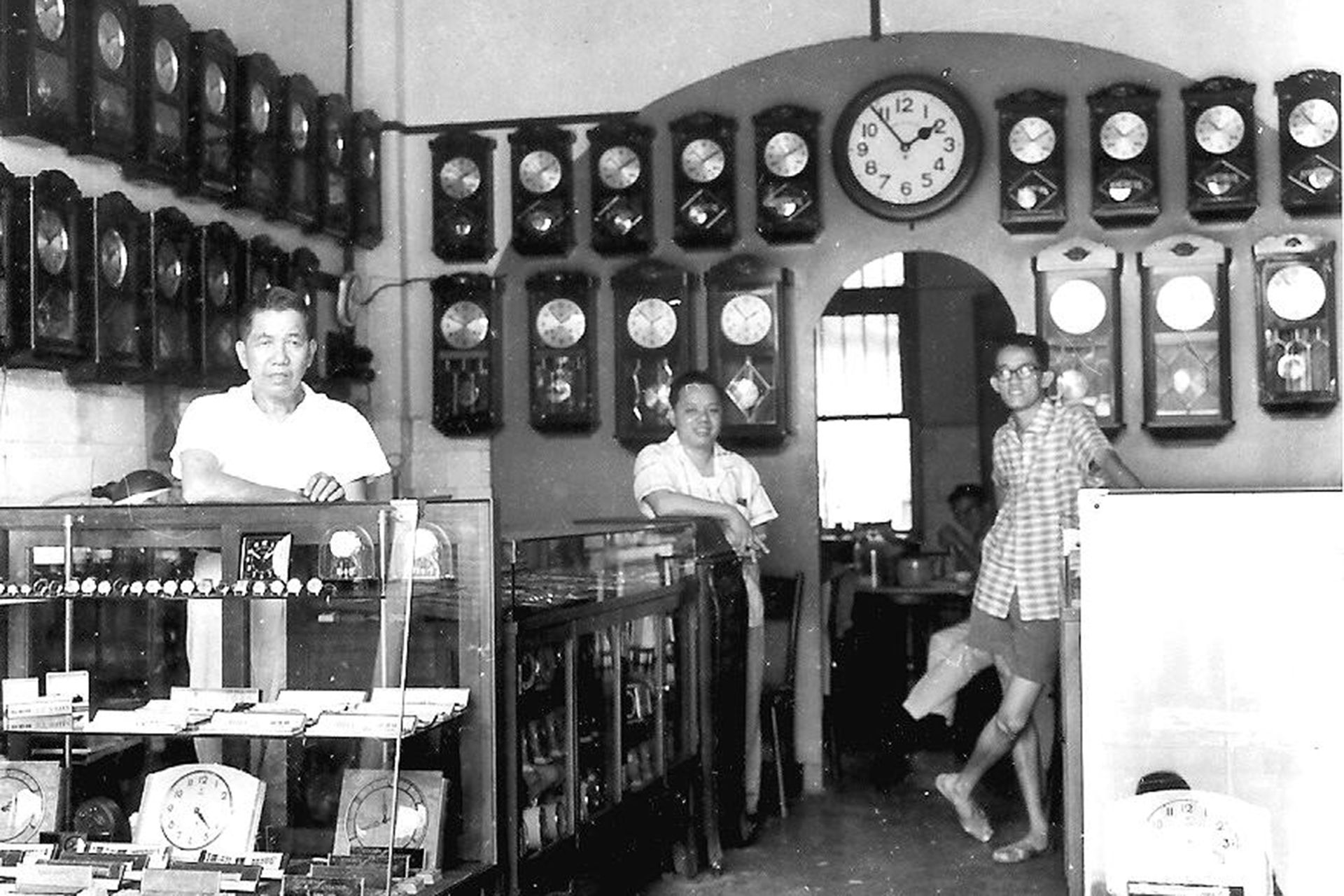
The shophouse was also where the family lived. They made ends meet not just by selling clocks, but also peddling drinks from a soda fountain.
With the aim of continuing the family business, Mr Mun, the youngest of three brothers, learnt how to repair clocks.
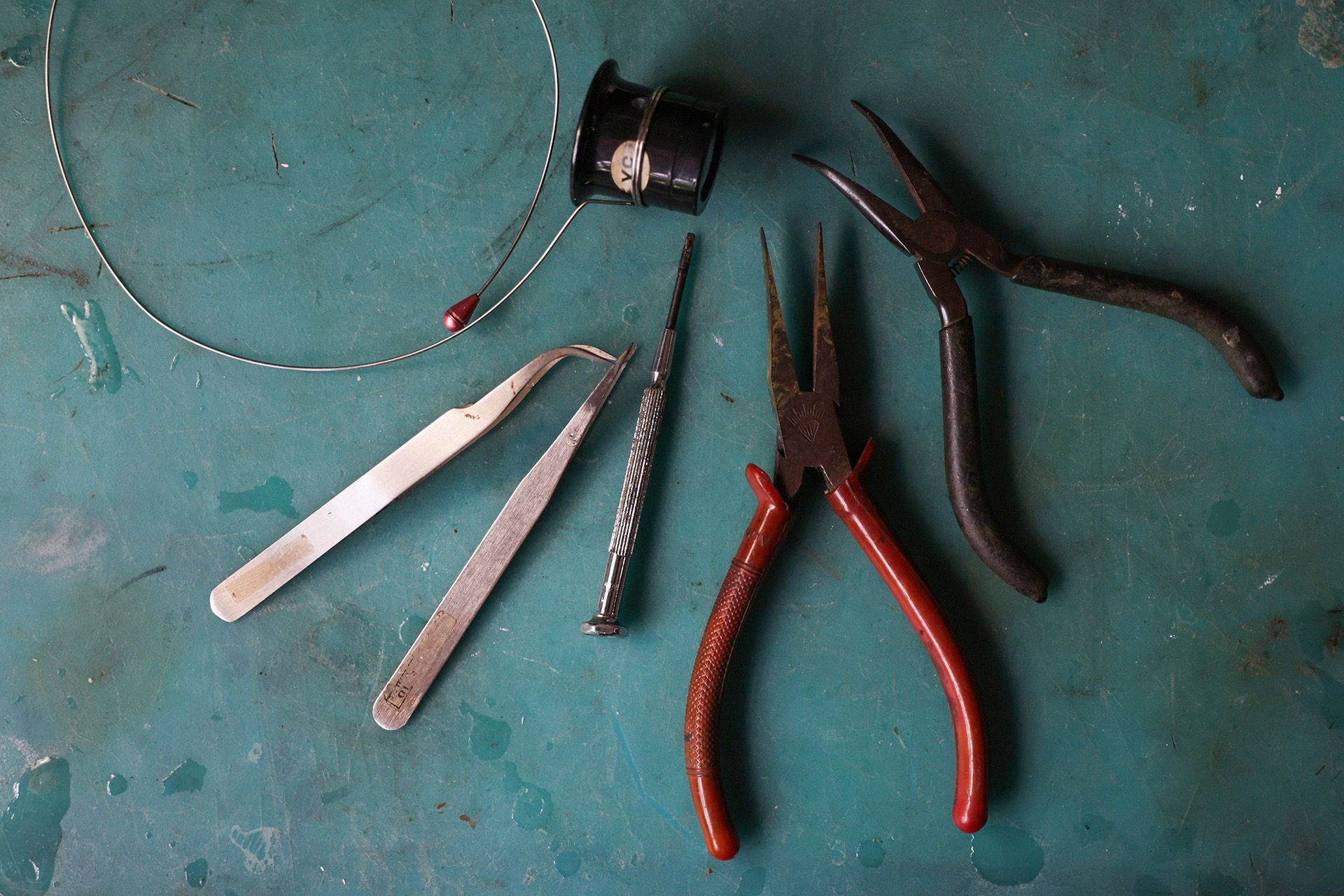
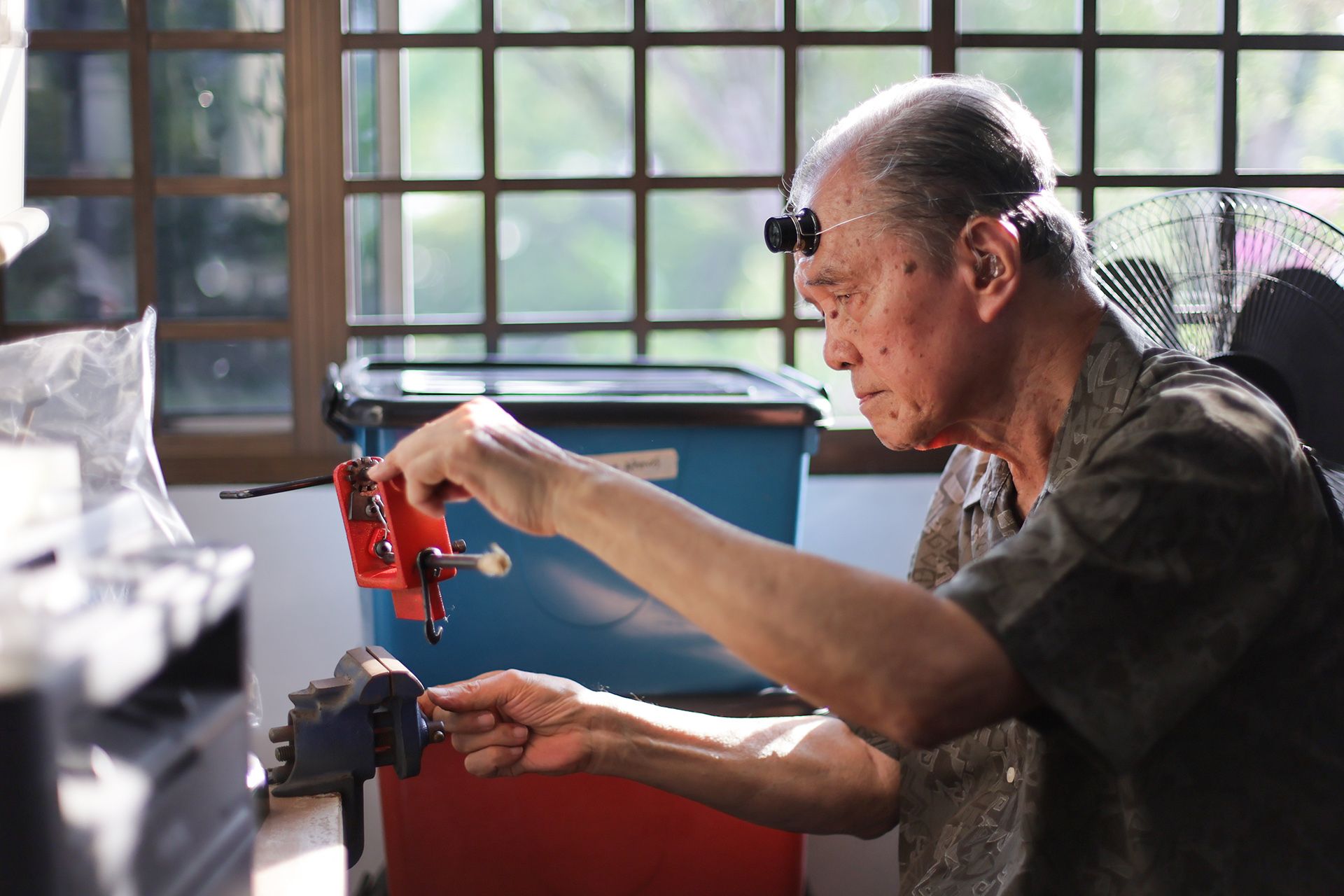
But when the Victoria School student received a government teaching bursary in 1960 to study science at the then University of Singapore, he exchanged clock repairing for a career in education. At New Town Secondary School, where he taught biology, he met his wife, Madam Tan Ling Cheng, a Chinese language teacher.

Mr Mun said: “My father did not object to my wish to study in the local university, as it was not easy during the 1960s for working-class children to do so.
“He had no plan to pass the business to anyone else, and the shophouse was eventually acquired by the Government and demolished.”
It was only in 1976 that Mr Mun’s passion for clocks was revived, when a schoolmate handed him a wedding gift to fix – a 400-day clock that had been deemed irreparable.

The clock, also known as a torsion pendulum clock, was named for its ability to run for about 400 days.
He said: “It was probably given to me because no clock repairers at the time wanted to bother with these timepieces, which were usually regarded as novelty clocks.”
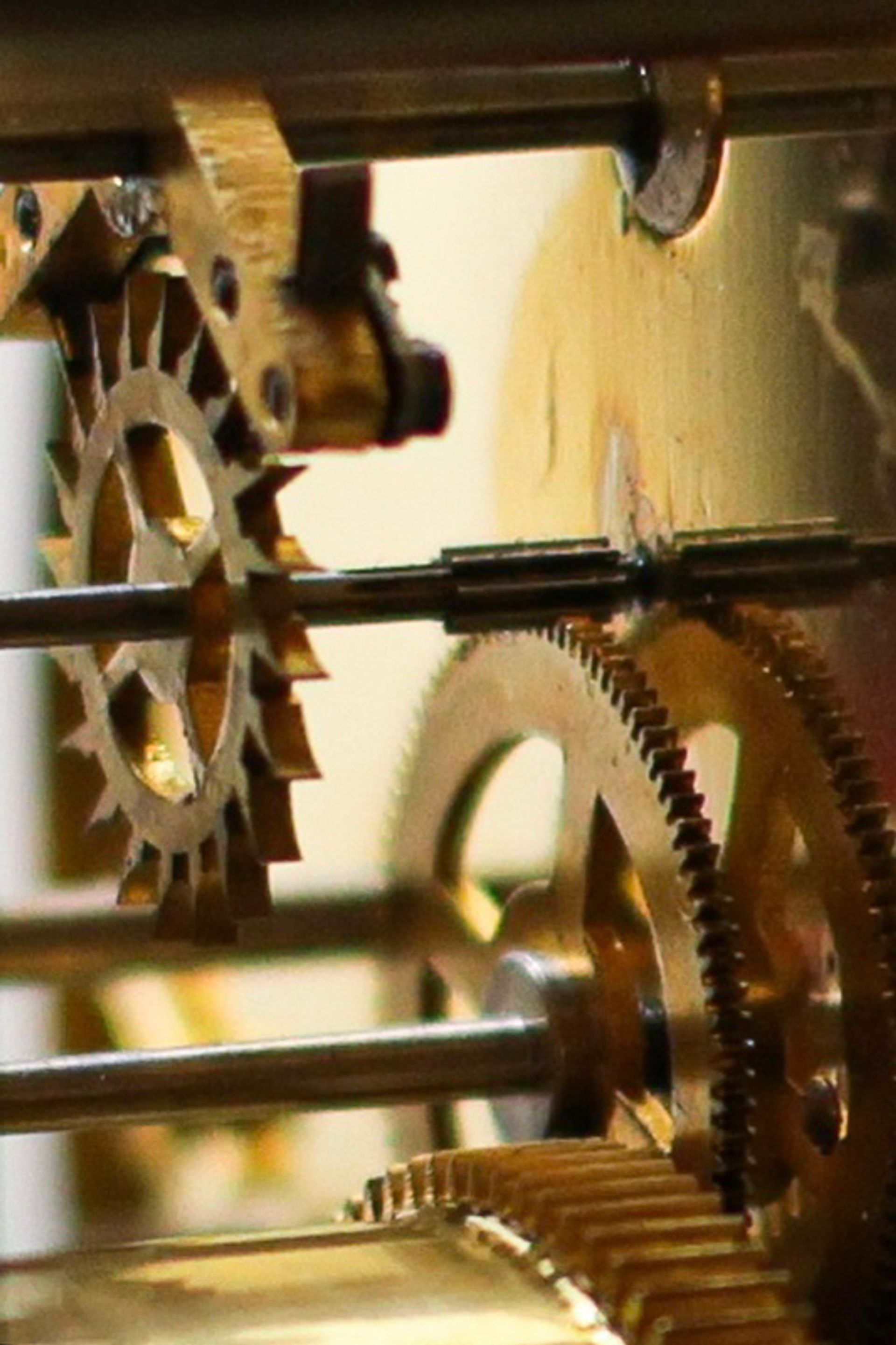
“This seemed like a great opportunity to test my skills.”
On his first try, the clock ticked for about half an hour before it stopped.
Instead of being deterred, he was determined not to be beaten, tinkering with every part of the clock until it sprang back to life.
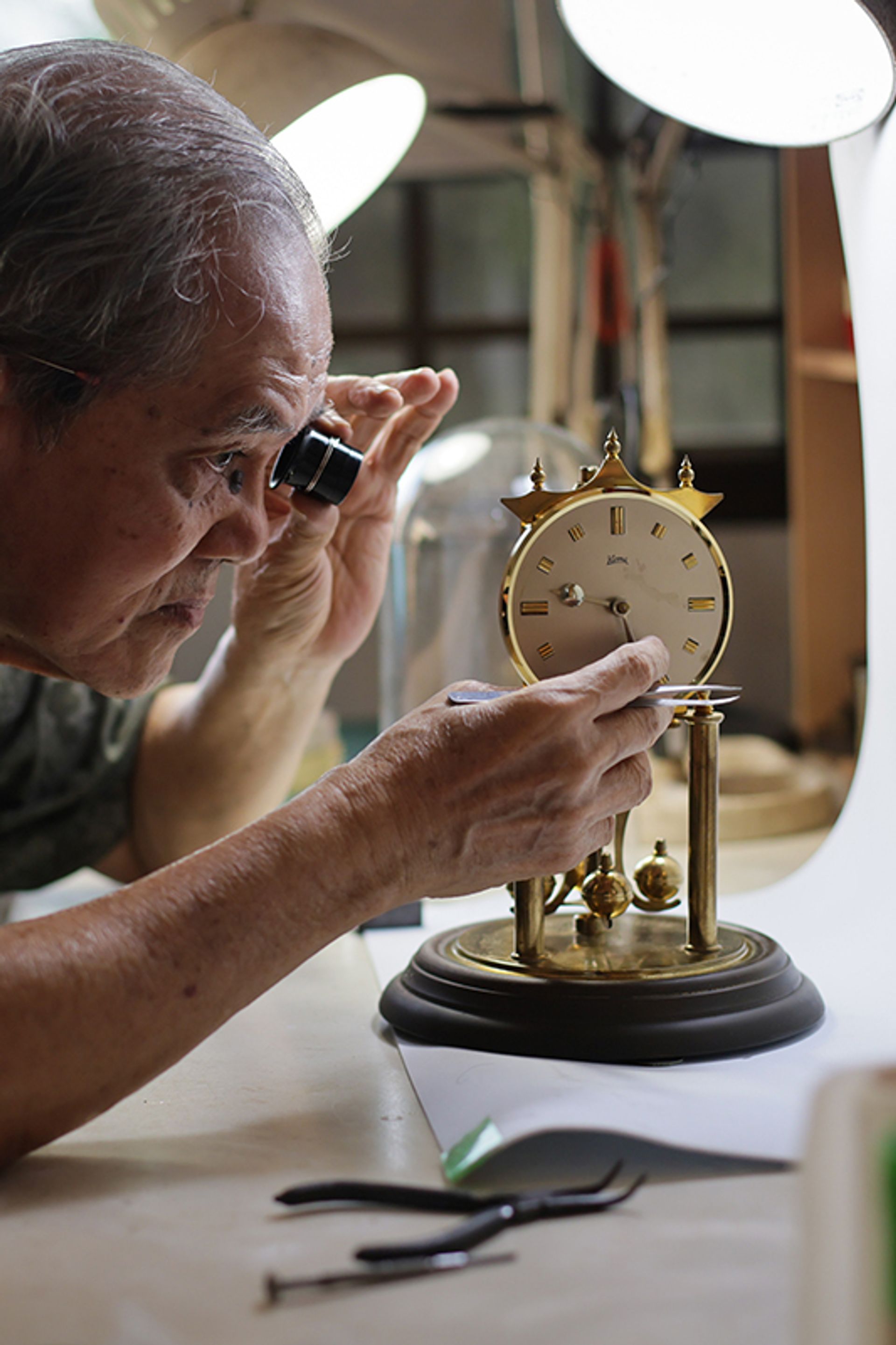
“That experience gave me a sense of accomplishment and taught me a valuable lesson: The world of clocks is a constant voyage of discovery, as each clock presents its own unique set of puzzles waiting to be solved,” he said.
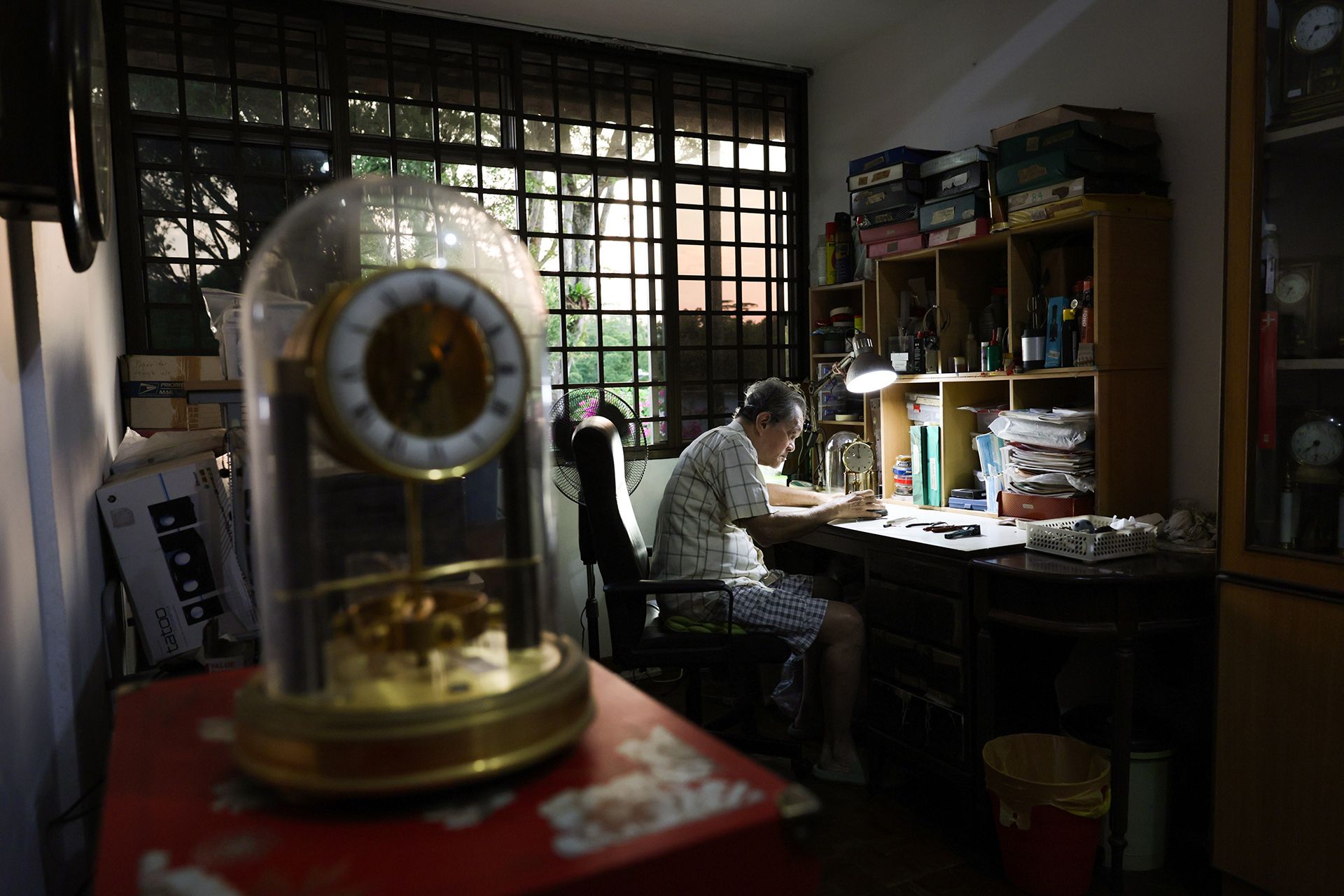
Word soon spread among dealers with a similar enthusiasm for 400-day clocks, who began contacting Mr Mun whenever they chanced upon interesting and rare pieces.
IT’S ABOUT TIME
As he bought horological books and magazines, his interest and knowledge in clocks grew.
By striking deals with overseas dealers over the phone and through mail, Mr Mun expanded the range of his collection.
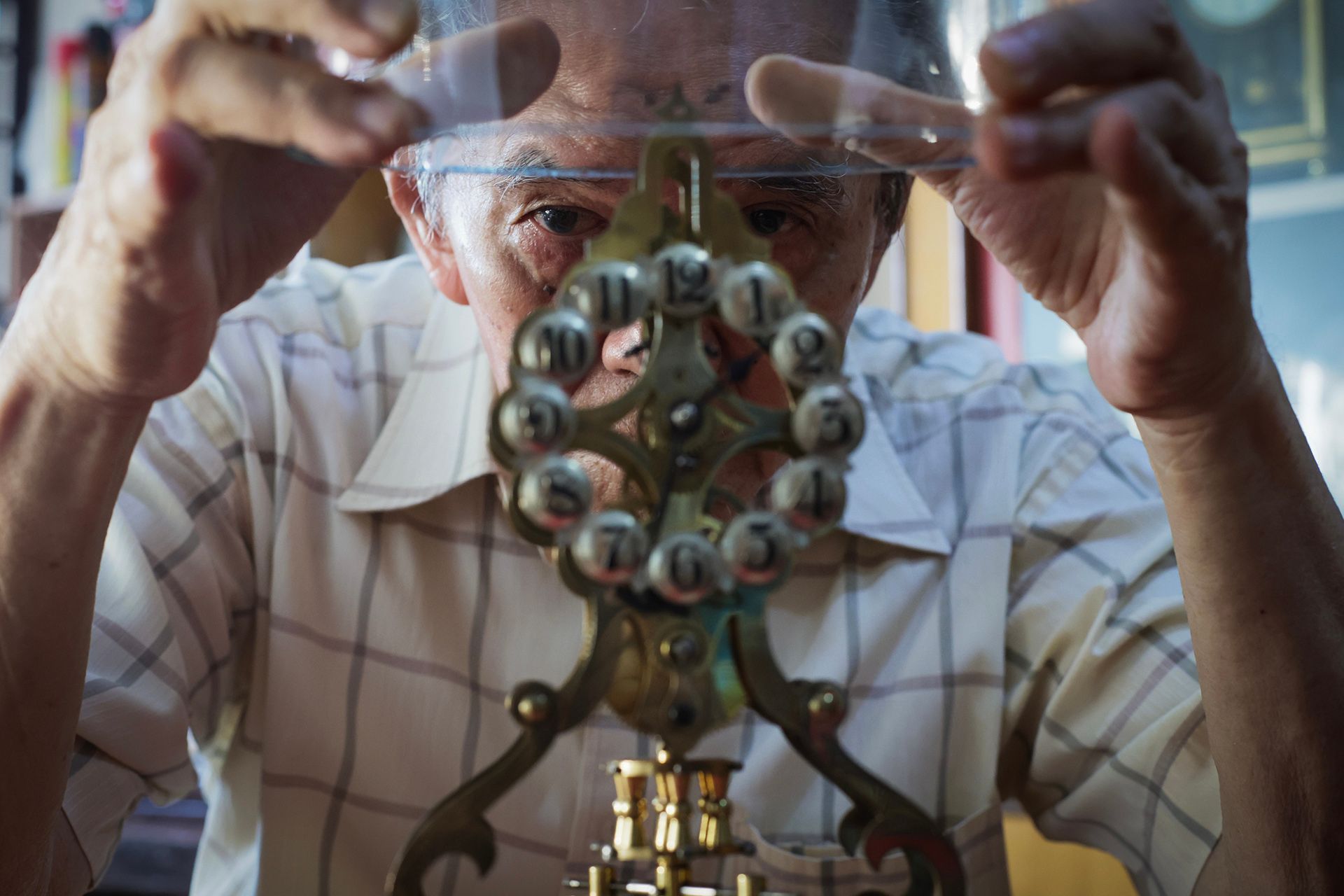
This included French table clocks, German-made Vienna regulators and marine chronometers, which helped to pinpoint ships’ locations at sea.
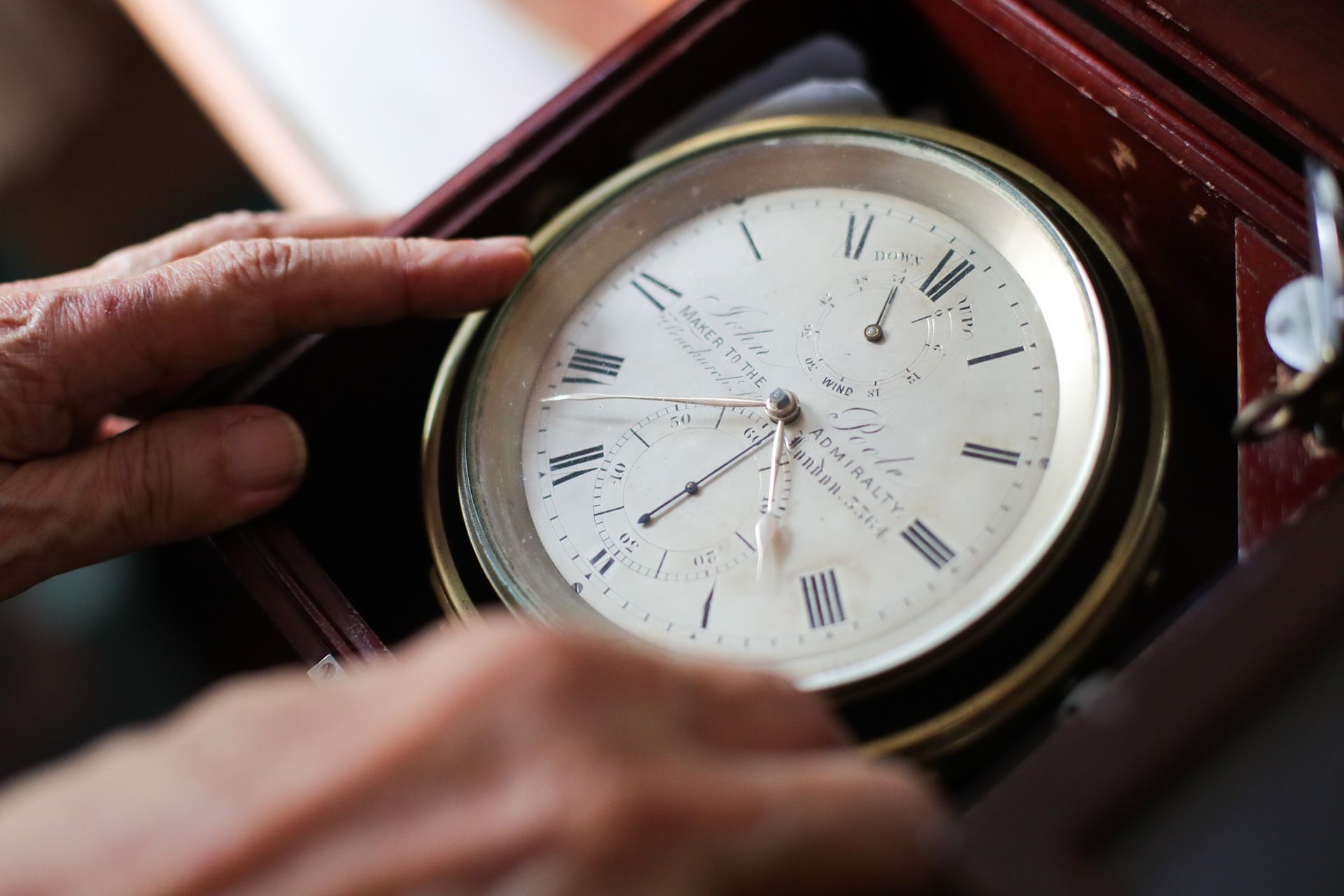
Mr Mun said: “Once you’re bitten by a collecting bug, the condition becomes like a terminal disease, it can only get more serious as time goes on.
“So one thing led to another, and before I realised it, I had about 200 (clocks).”
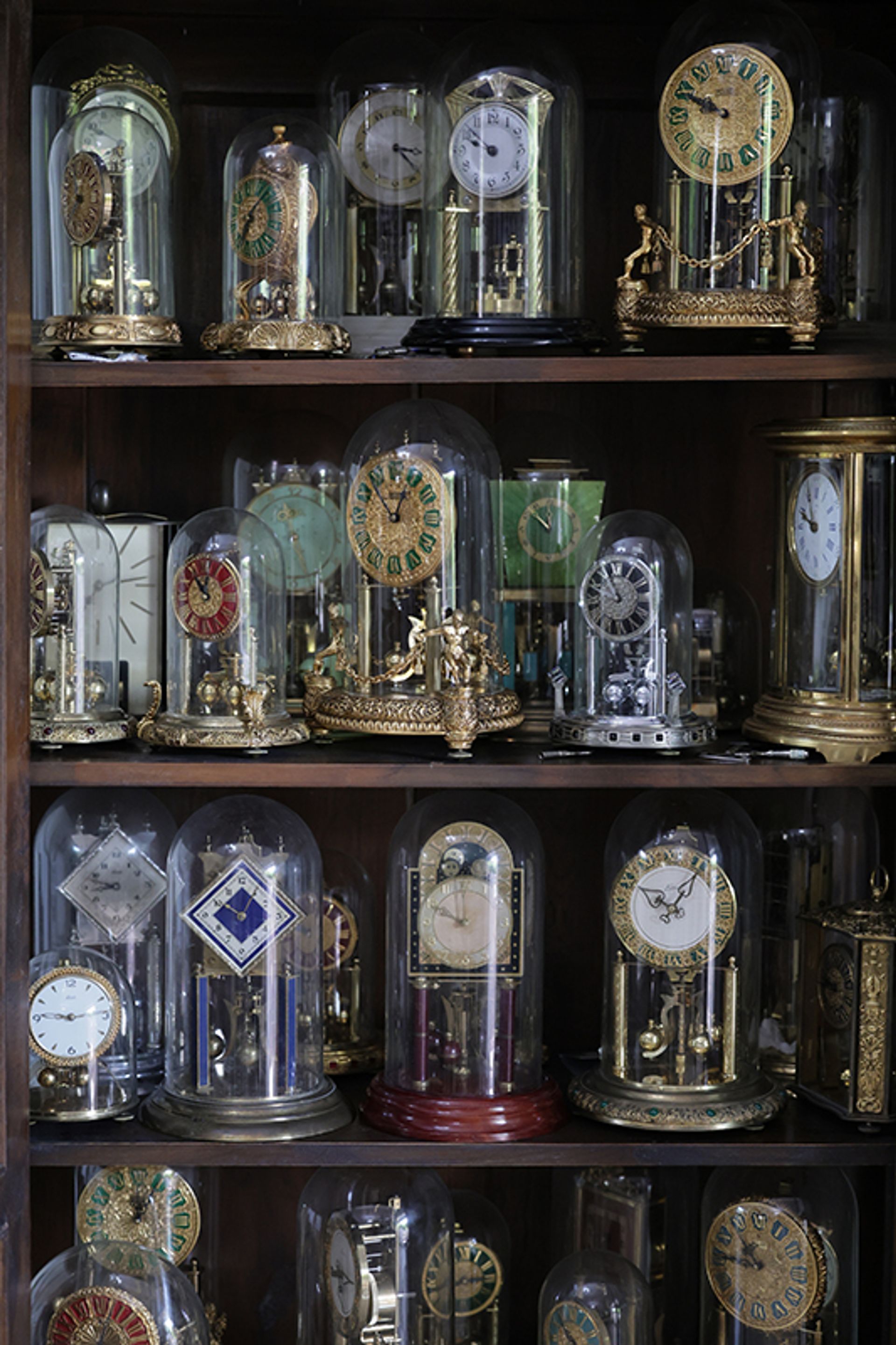
These now occupy nearly every wall of his two-storey semi-detached house in Bukit Timah, where he has lived since 1989.
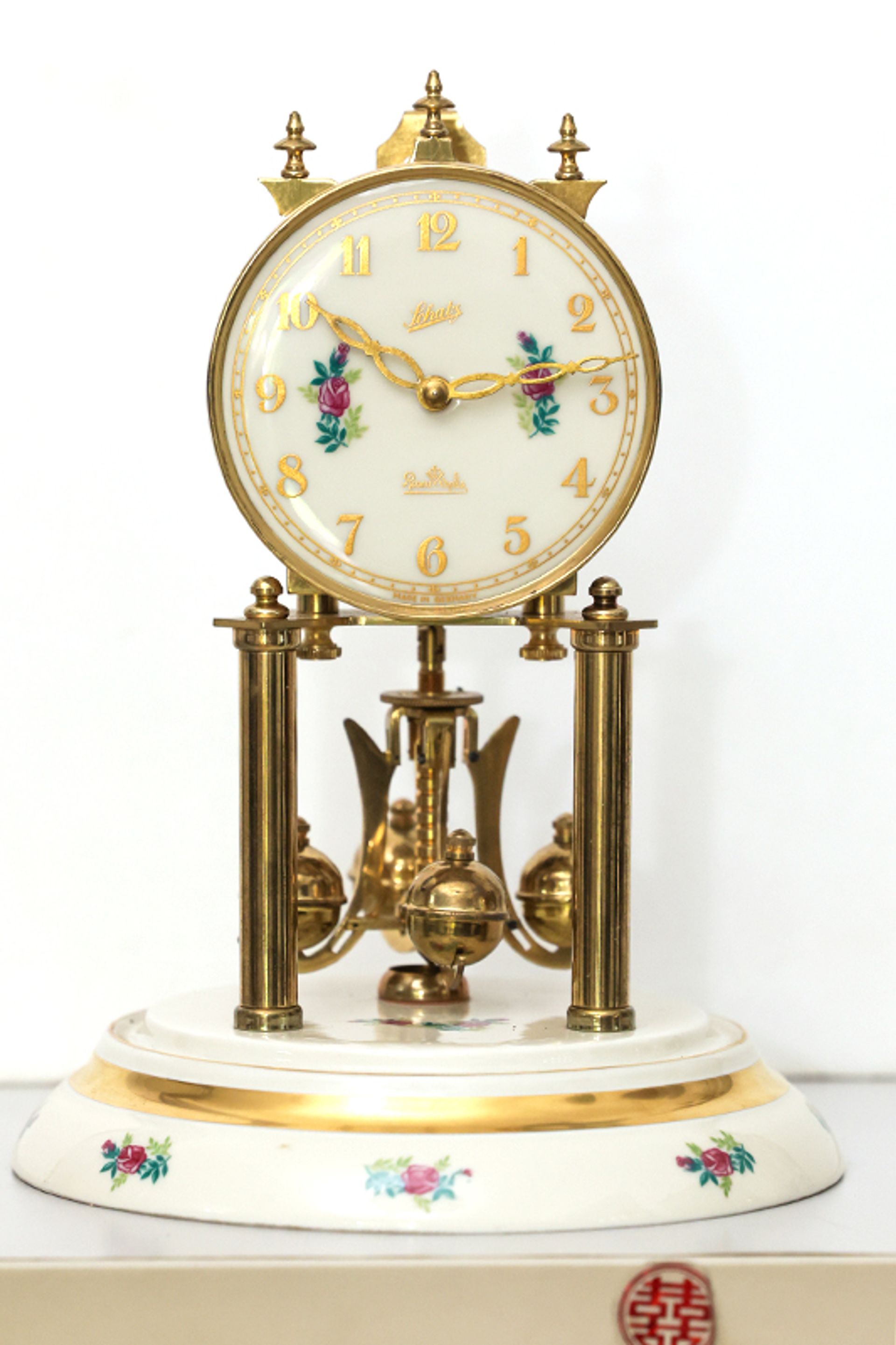
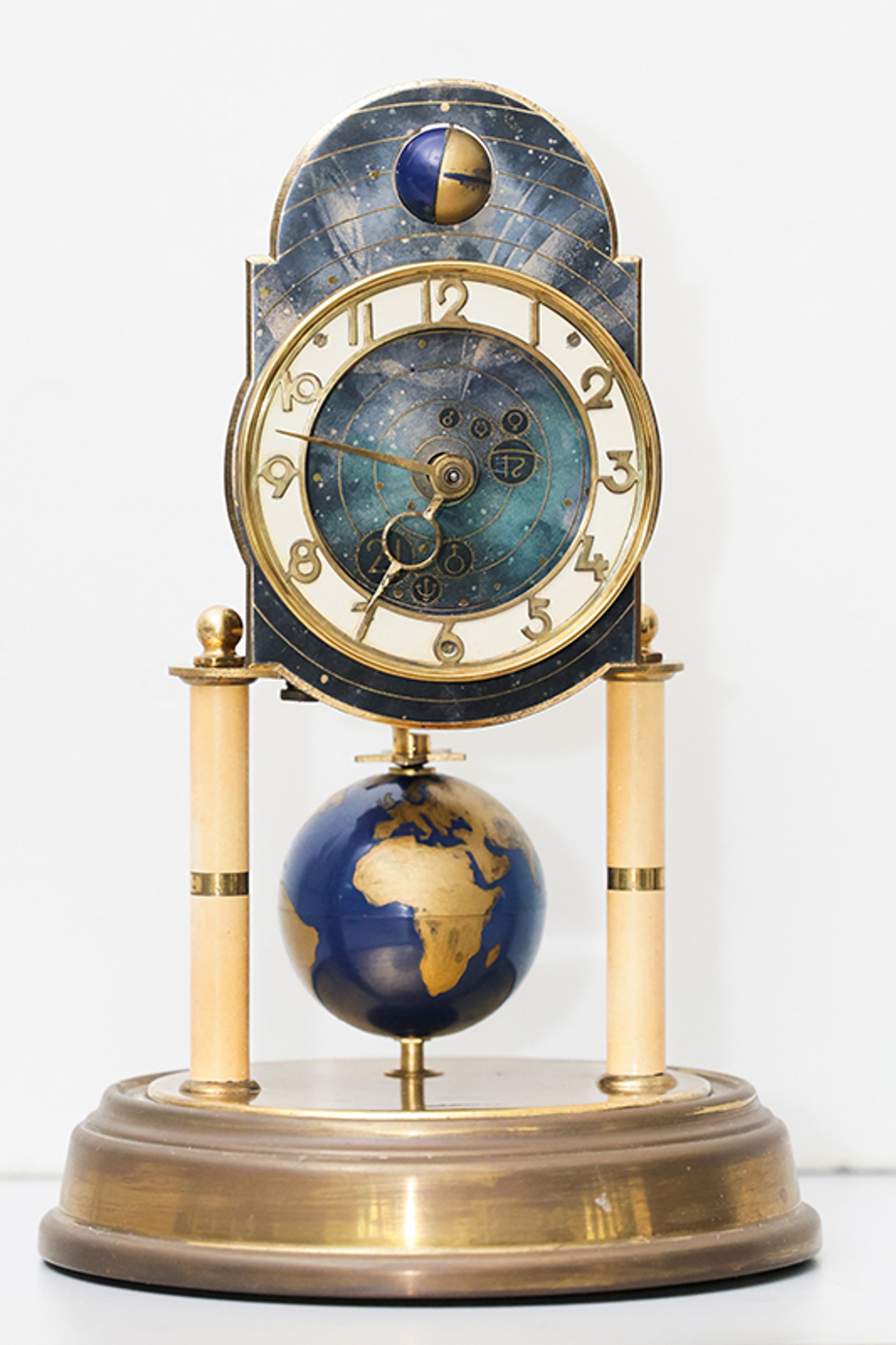
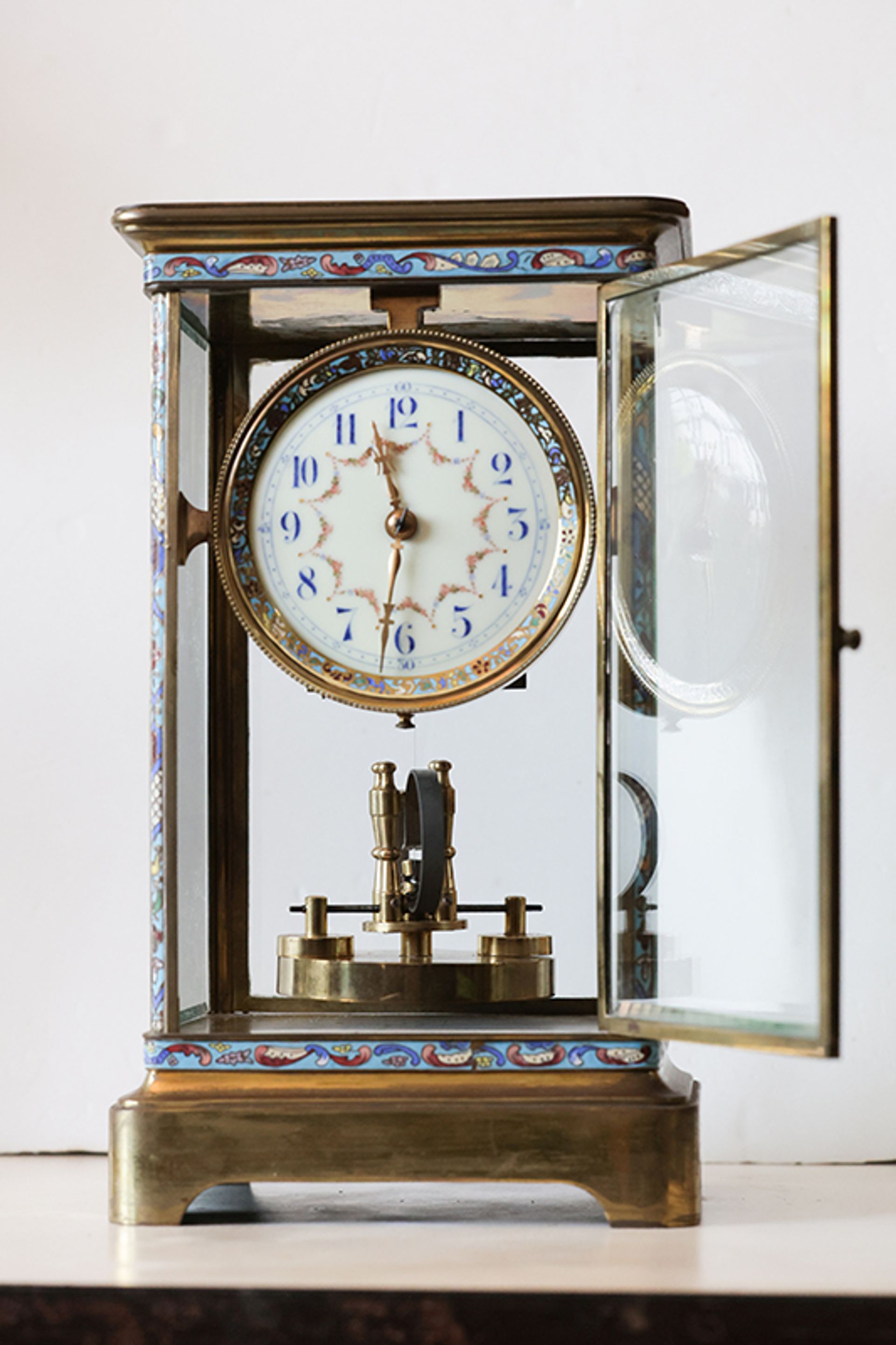
The clocks have become such an important part of him that when the family moved into the house before the clocks were brought over, it felt weirdly foreign.
He said: “It was unusually quiet without the ticking sound of the striking clocks.
“I felt more at ease when I brought my clocks in.”
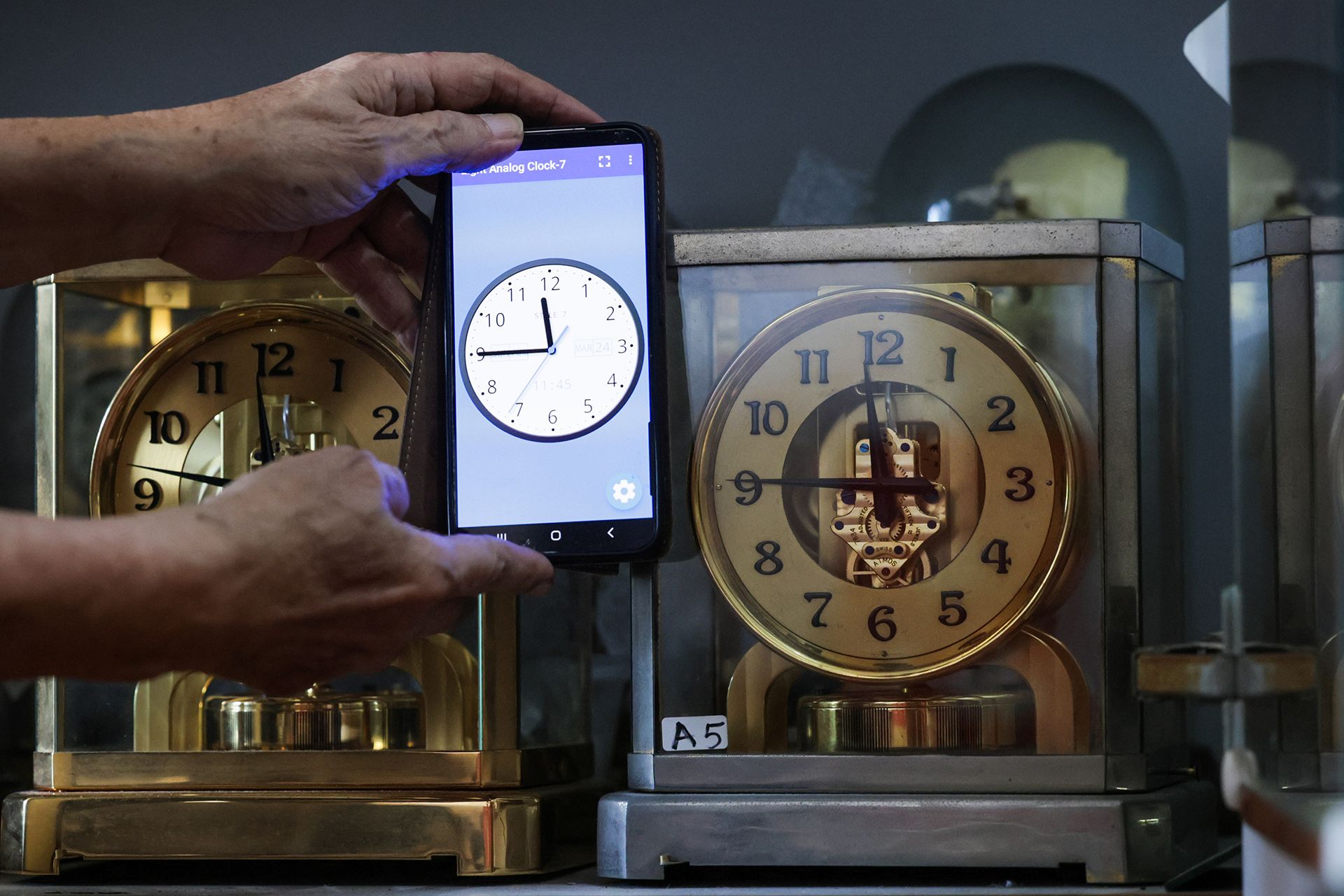
In the living room, visitors are greeted by a golden timepiece embellished with the Chinese mythical creature qilin and other Chinese motifs.
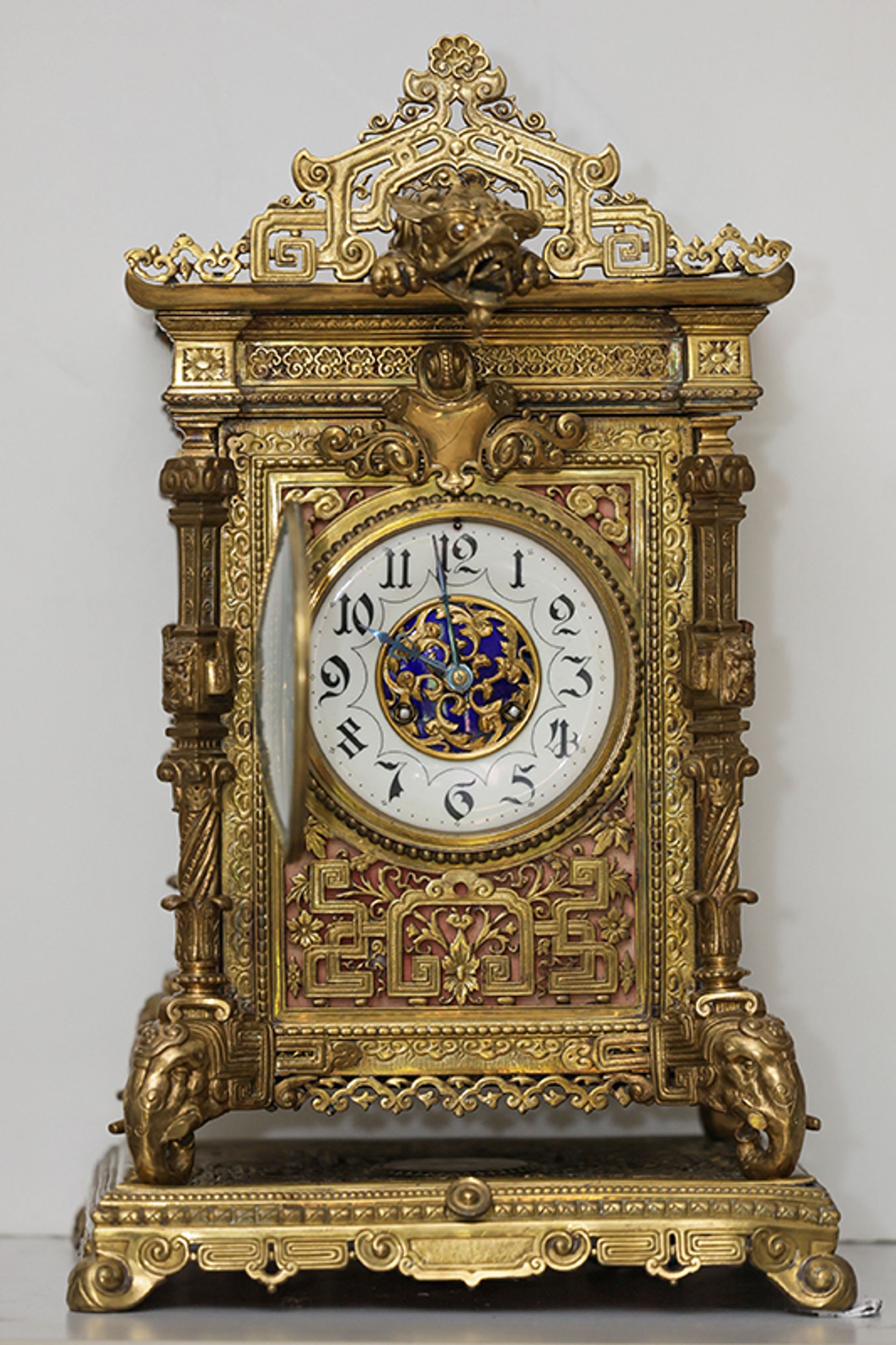
The 19th-century creation by French clockmaker A.D. Mougin is an indication of how the European product had a market in China.
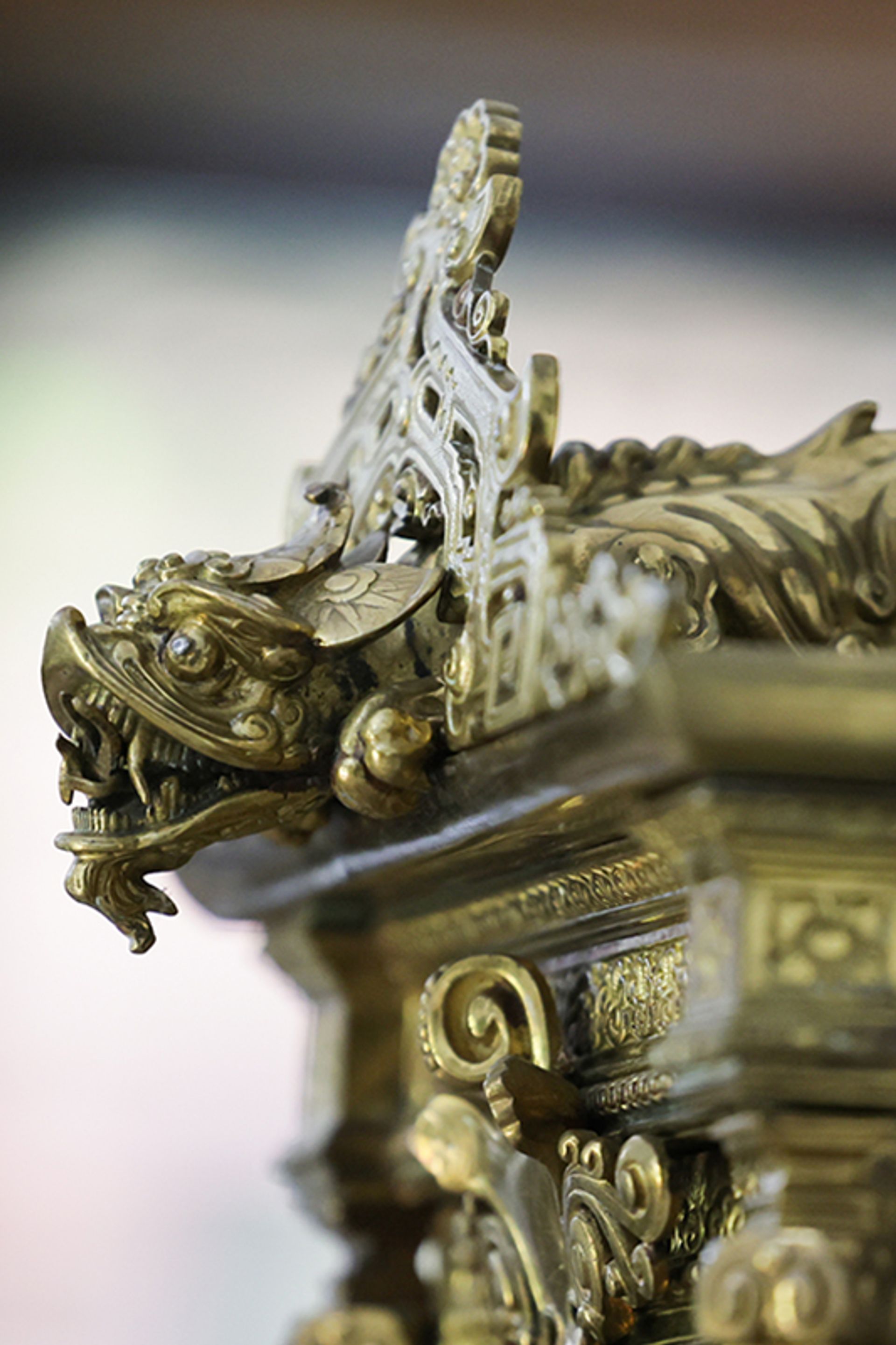
Encased in a clear plastic box, the 40kg clock was purchased by Mr Mun in the late 1980s from a dealer in Britain for a few thousand dollars.
The walls by the stairs leading up to the second floor of his house are lined with pendulum clocks, including the Vienna regulator, a wooden antique whose resonant chime once told the time to owners of European mansions.
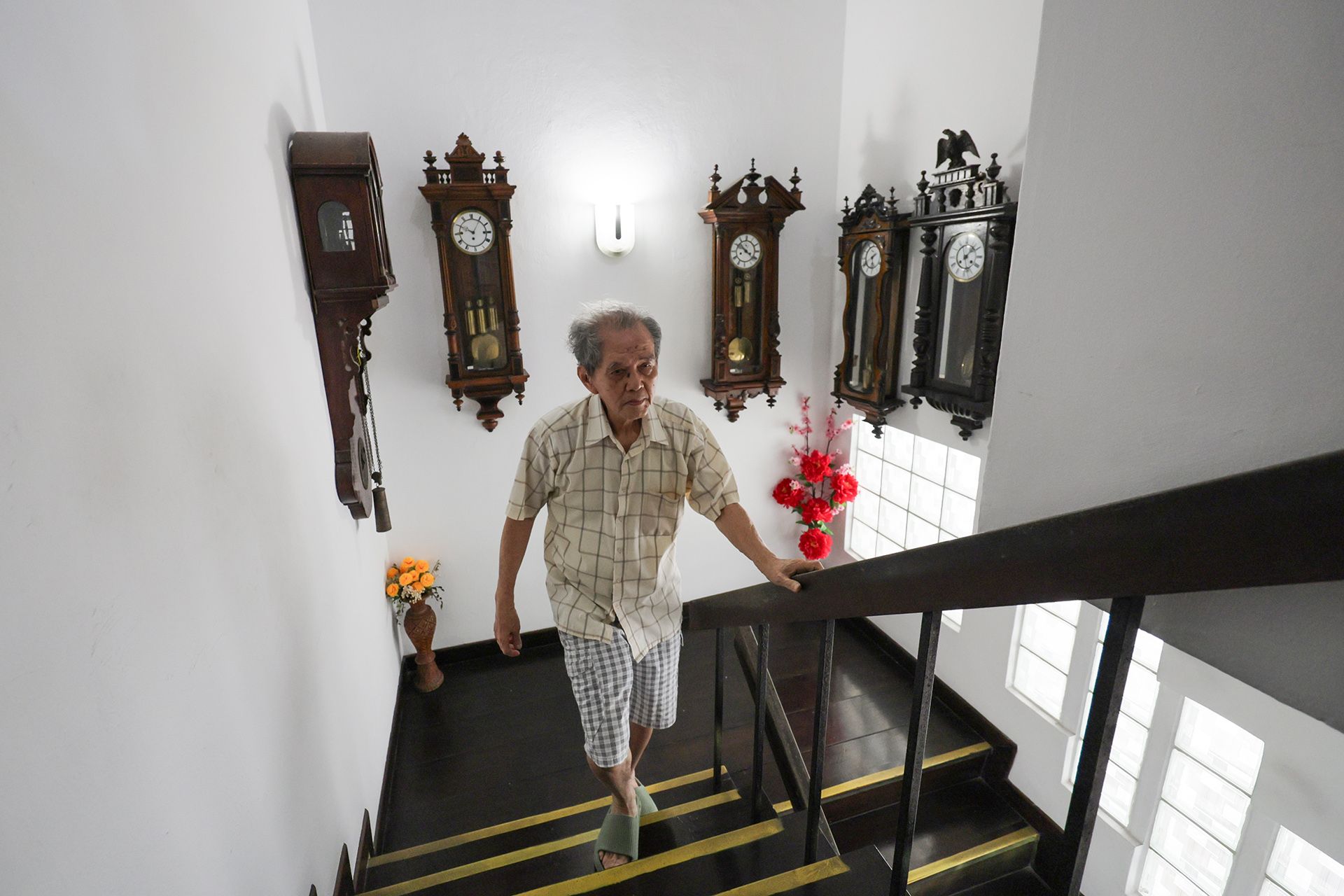
Still, Mr Mun retains a soft spot for 400-day clocks, which have their own cupboards on both floors of his house.
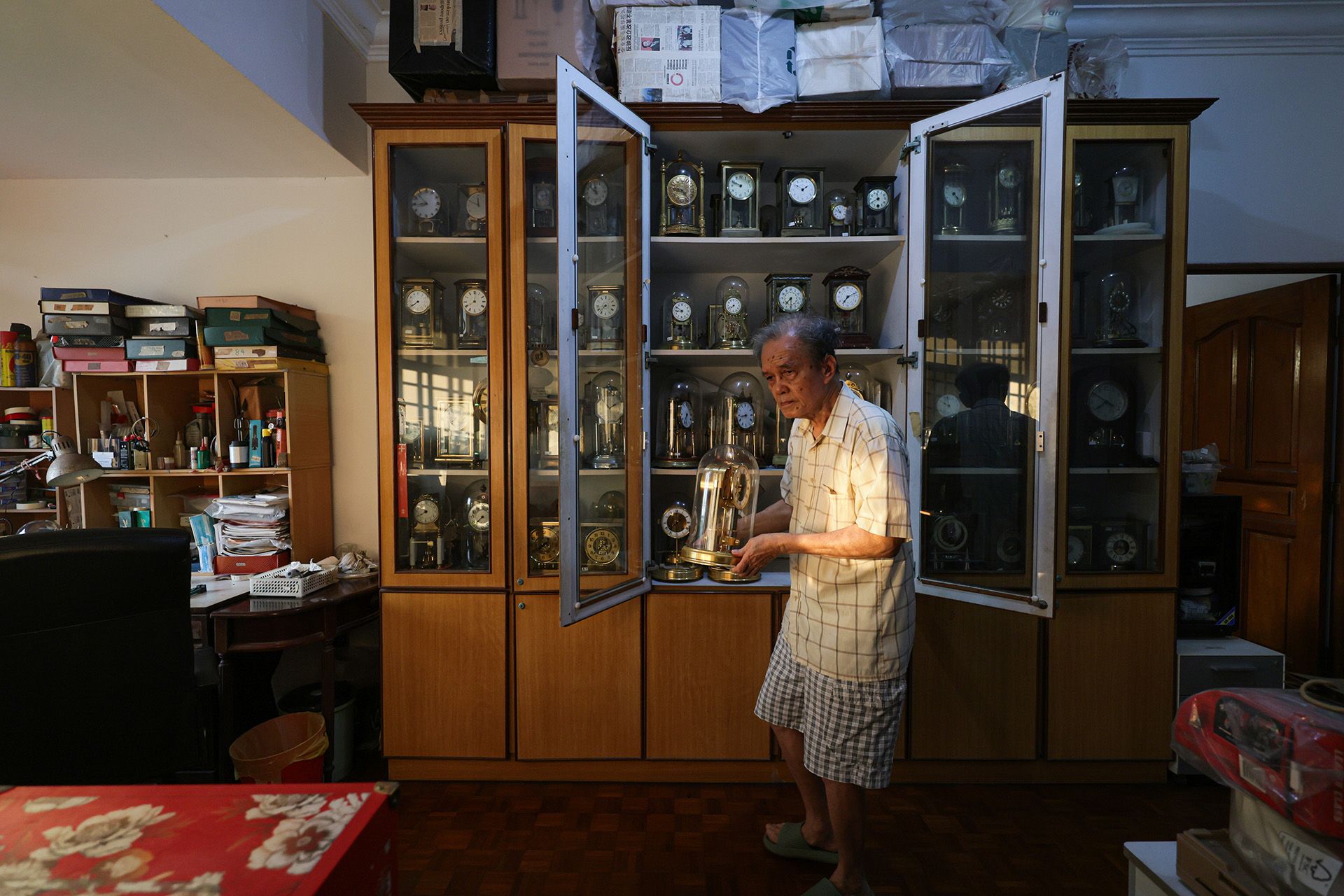
The 83-year-old bought the carpark sign of the first clock company to mass produce 400-day clocks, Jahresuhrenfabrik.
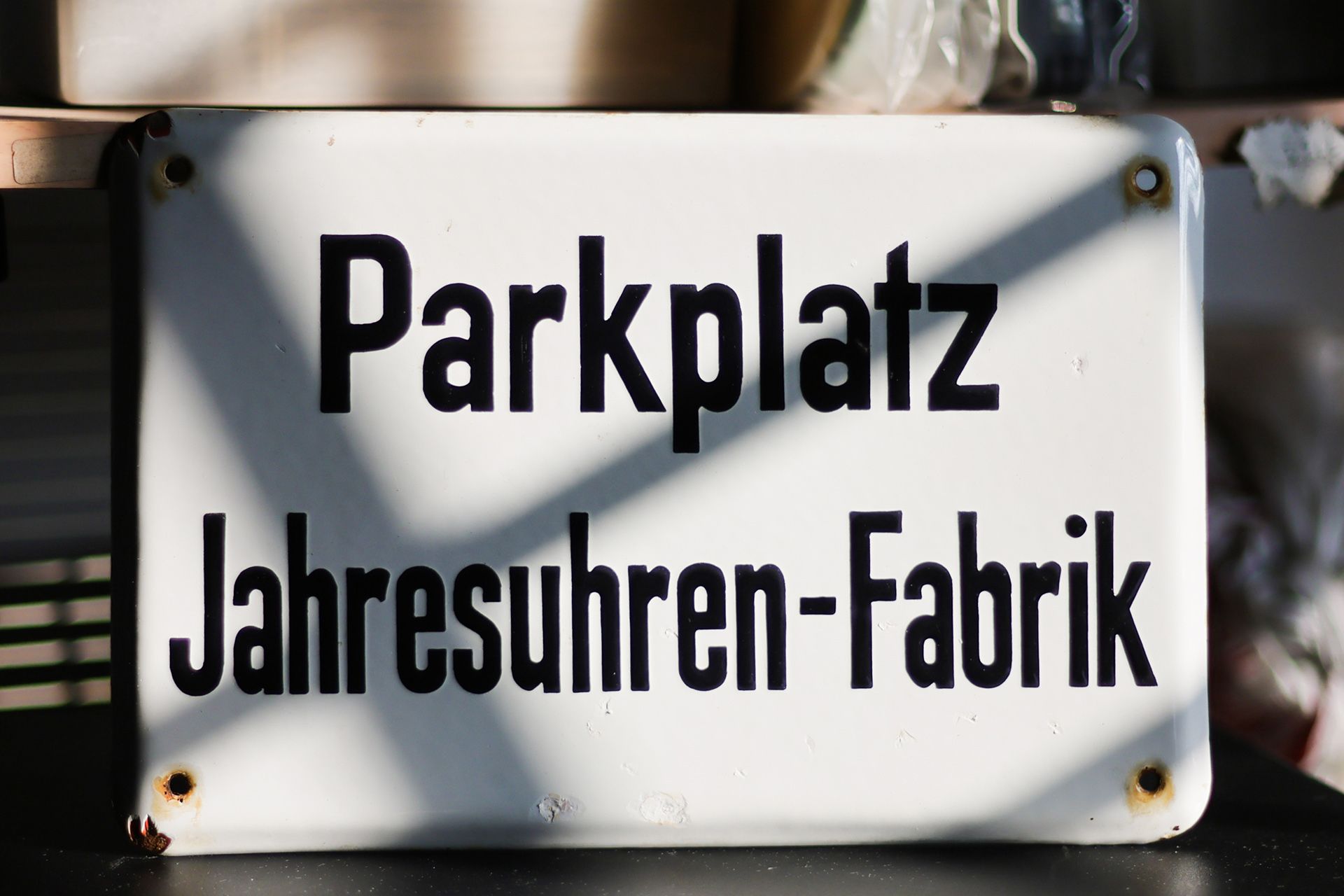
The factory in Germany was one of the victims of the quartz revolution, when more accurate and affordable quartz clocks supplanted mechanical ones. It went bankrupt in 1986 and has since been demolished.
Mr Mun said: “Being a 400-day clock collector, I like to own a piece of 400-day clock history.”
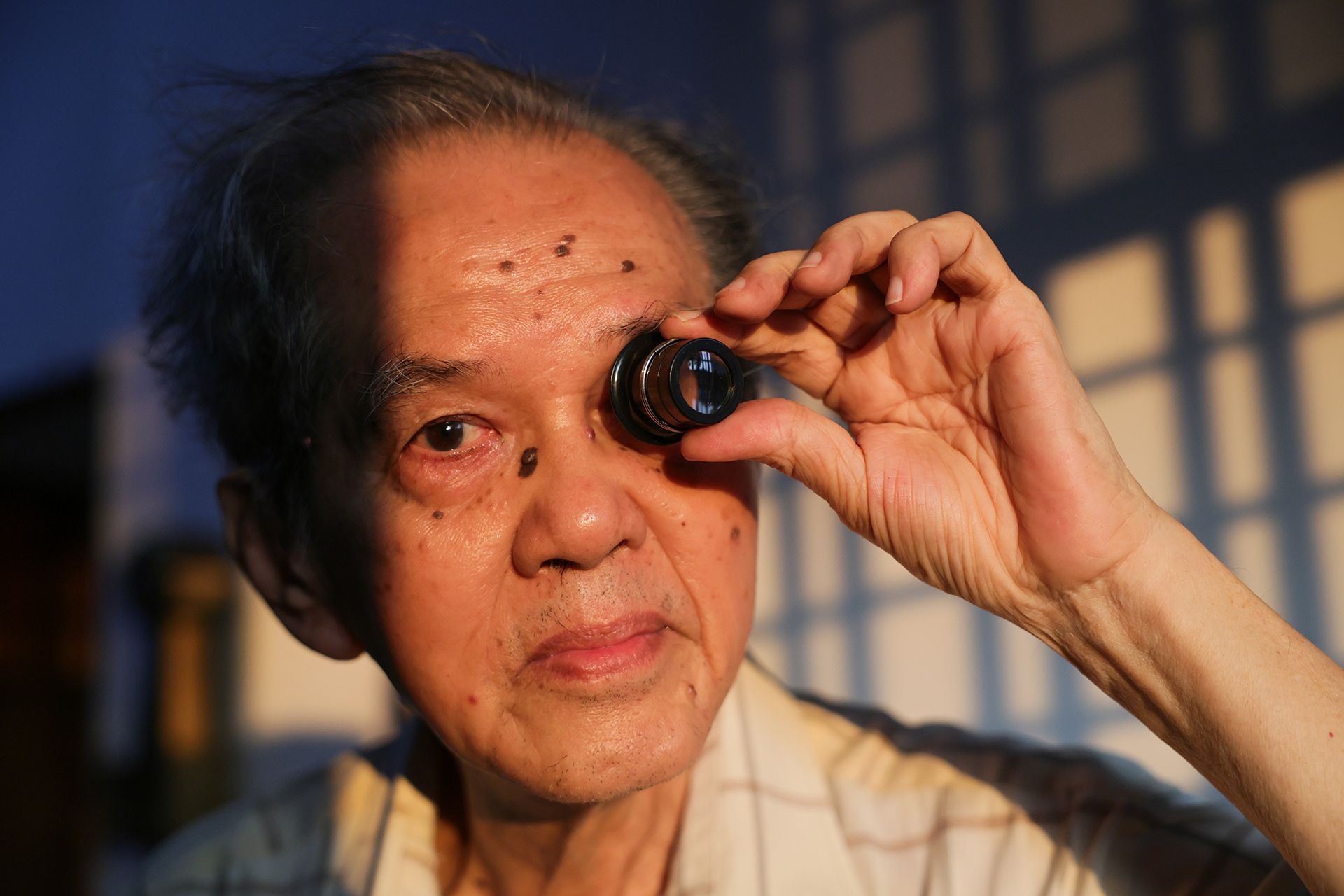
Nearly half a century after discovering these clocks, his painstaking research into clocks and how to repair them, especially 400-day strikers, has led him to write many articles in publications on clocks.

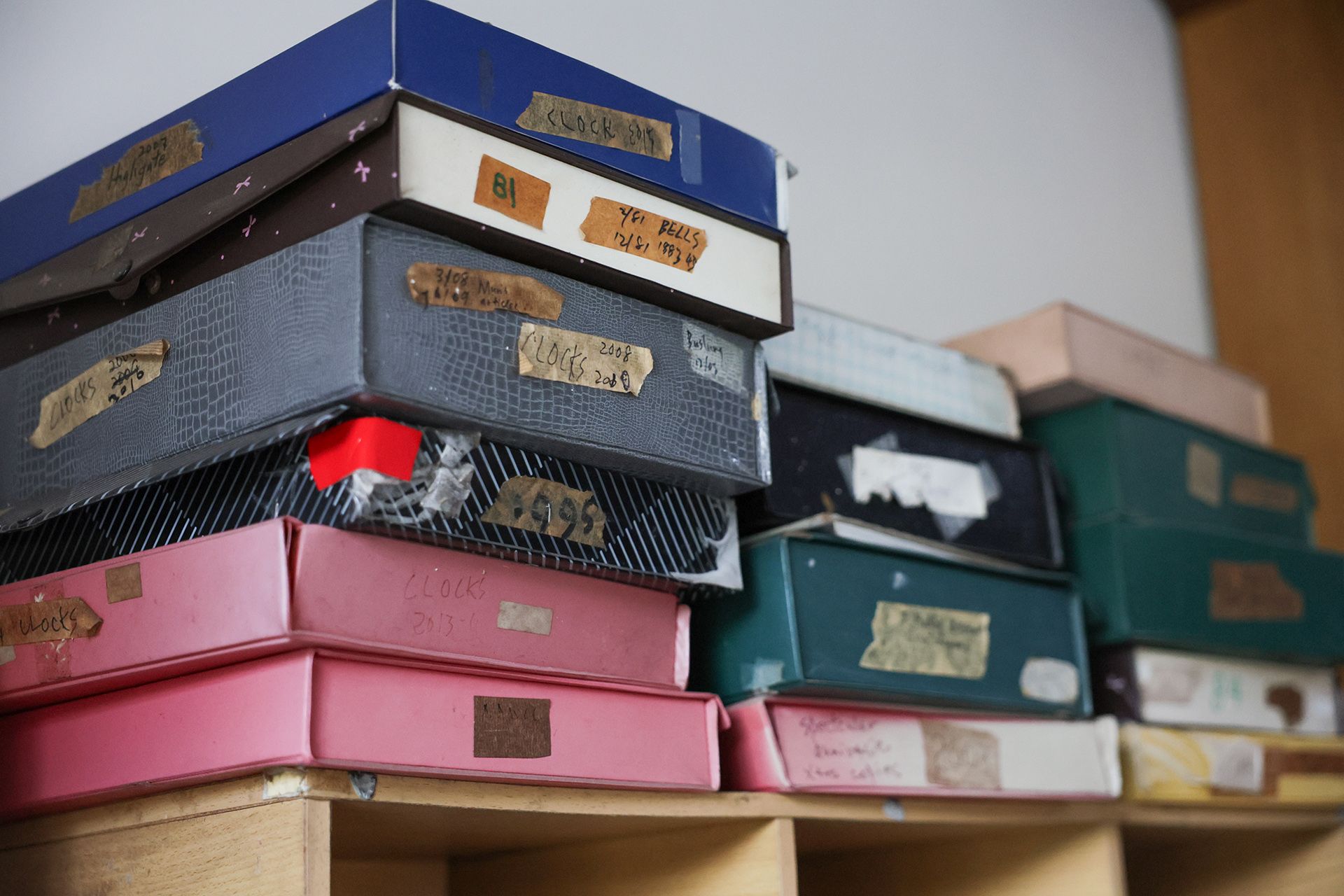
He is one of the founding members of the International 400-Day Clock Chapter 168 with the US-based National Association of Watch and Clock Collectors for enthusiasts committed to preserving the art form.
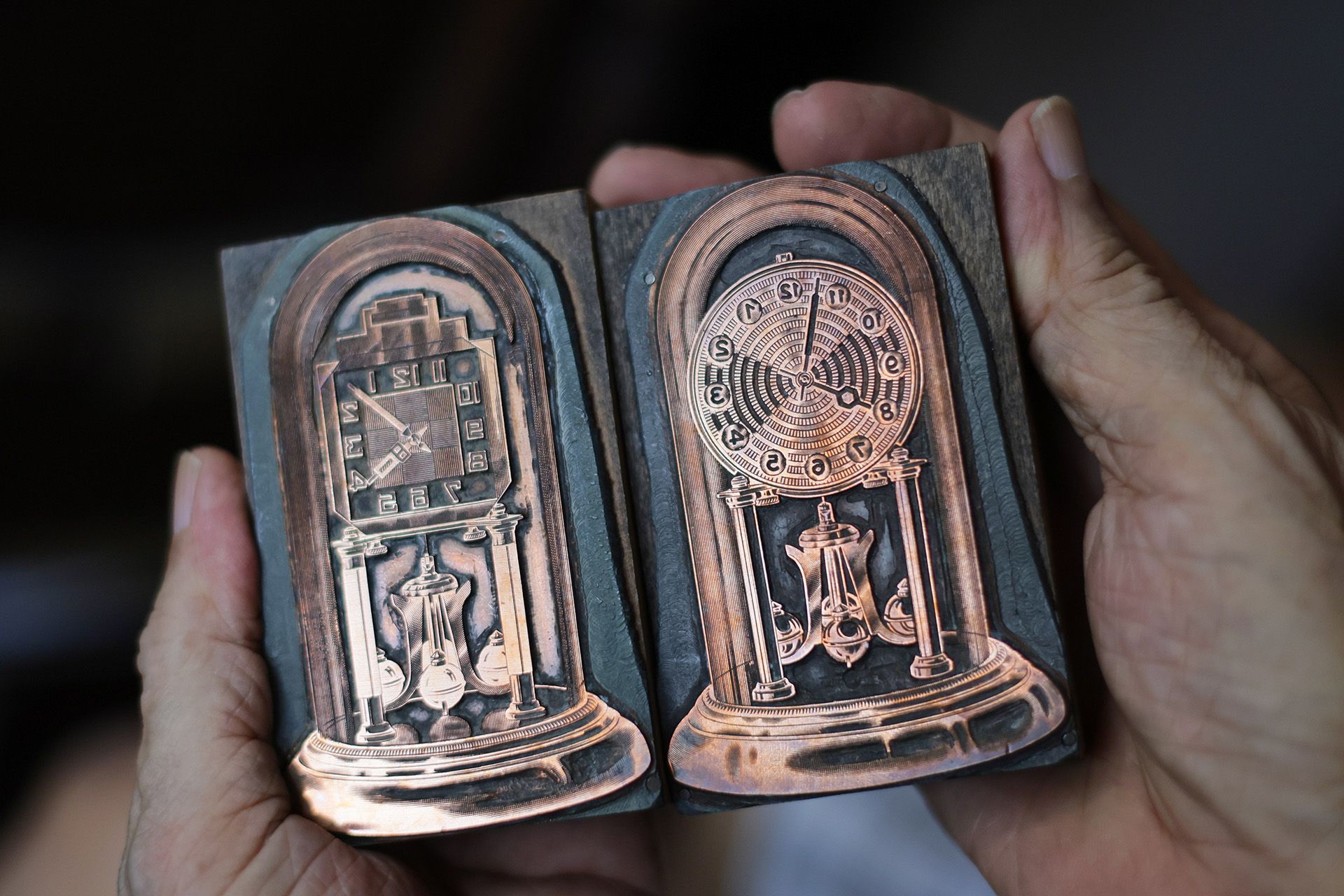
His family is supportive of his passion, which has become part of their home.
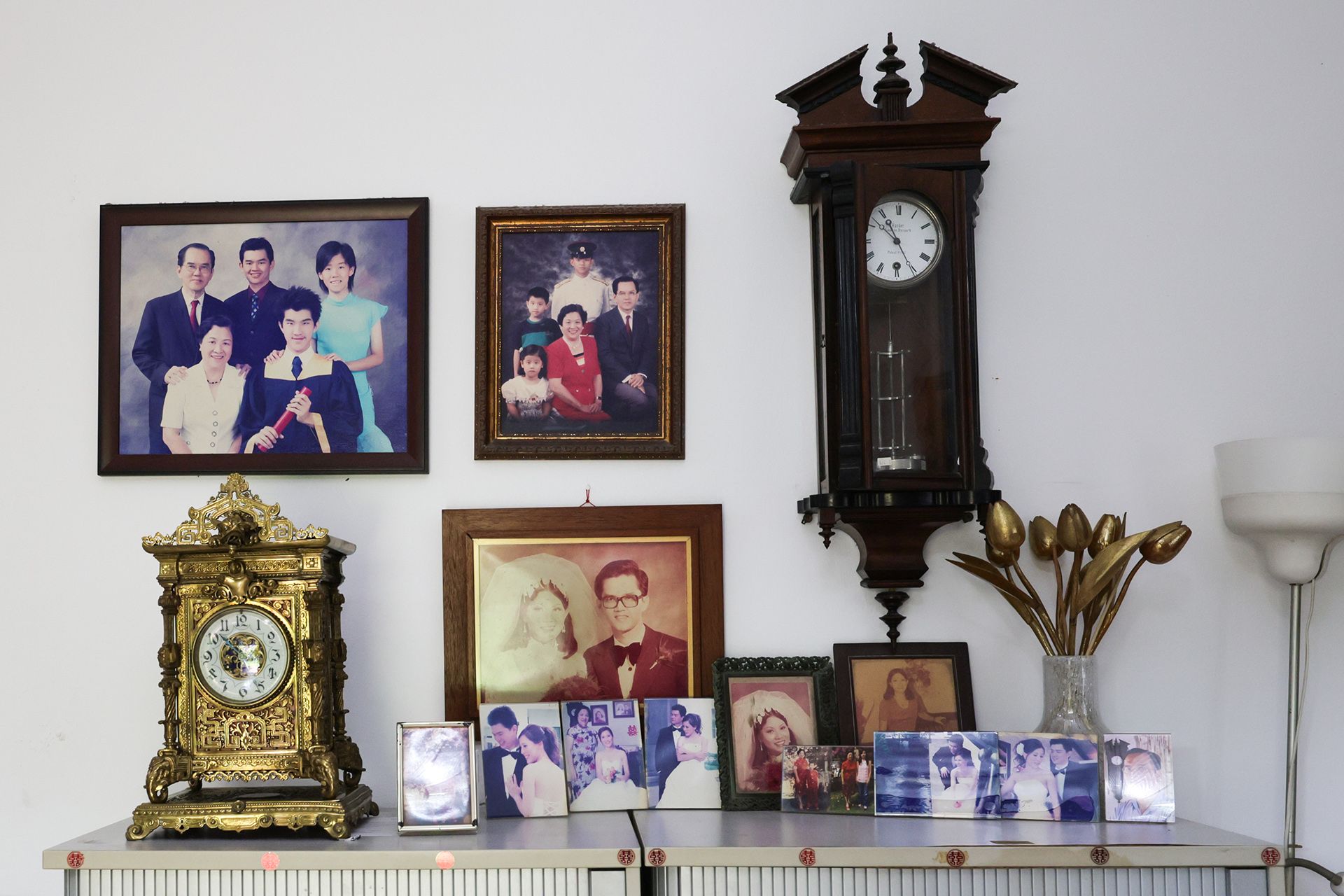
His three adult children will inherit the collection, which includes many rare and historically significant pieces.
Madam Tan, who will be married to Mr Mun for 50 years in November, quipped: “It’s good that he’s interested in old things rather than sweet young things.”